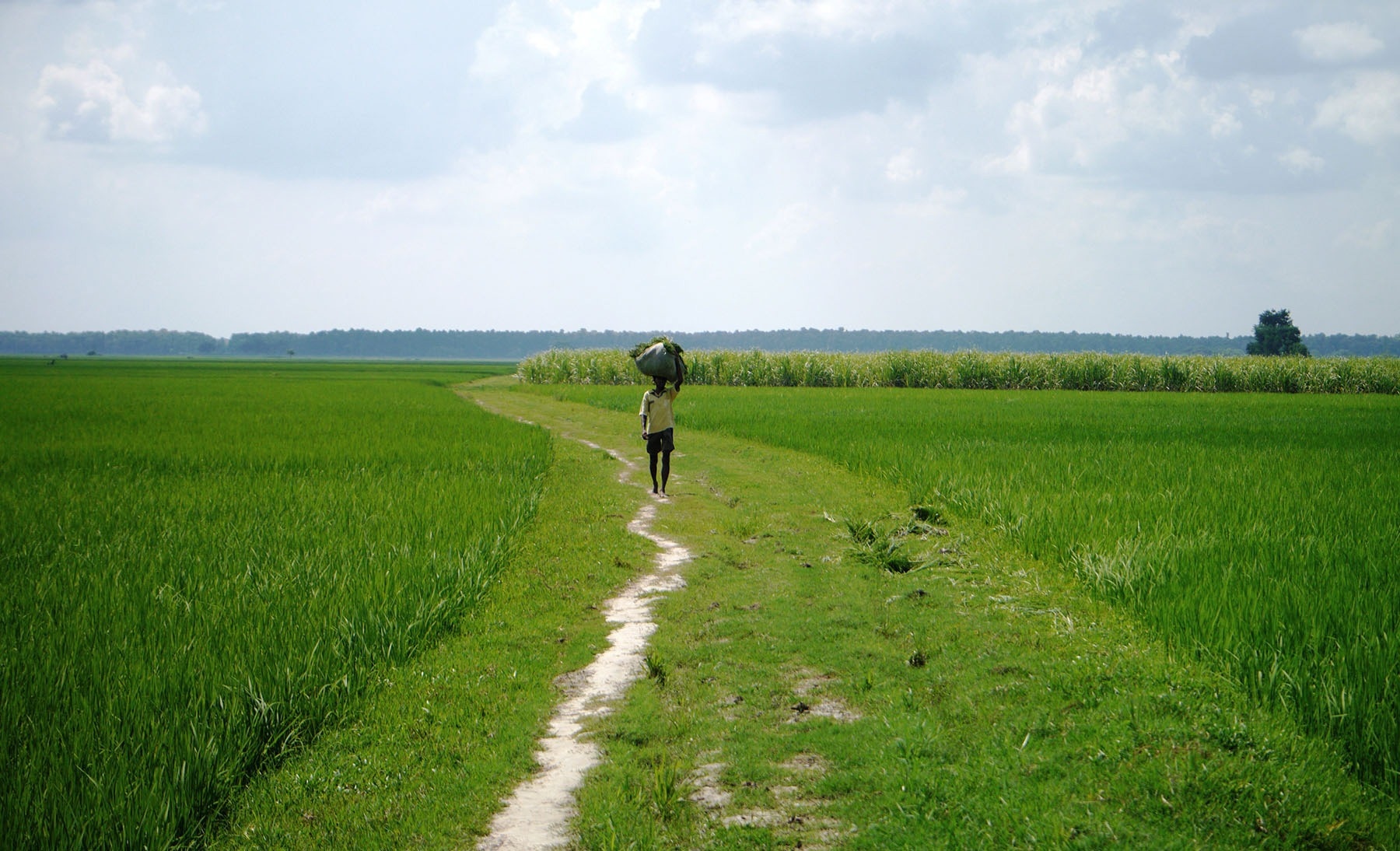Climate change, and the resultant extreme weather events, have recently been shown to have a negative impact on crop yields. Worryingly, there is a huge disparity in agricultural vulnerability between developing and developed countries, and researchers have recently been looking at major food grains in India to understand the long- and short-term effects of climate change on crop yields.

Rice fields in Uttar Pradesh, a state in northern India. Image Credit: Carl R. Woese Institute for Genomic Biology
Most studies that measure the effects of climate change are looking at year-to-year changes, which are representative of variations in weather and not climate. We used data across 60 years to examine how deviations in weather from long-term averages affect the yields of three major cereal crops: rice, maize, and wheat.
Madhu Khanna, Professor, Agriculture and Consumer Economics, Carl R. Woese Institute for Genomic Biology
Weather changes are short, like a hot day followed by a thunderstorm. Such variations, however, may be distinct from long-term trends that characterize climate change.
We were looking to see if the effect of short-term deviations in extreme temperature and precipitation are significant when compared to their long-term averages and if their effects are absent in the long term as farmers adapt to climate change.
Madhu Khanna, Professor, Agriculture and Consumer Economics, Carl R. Woese Institute for Genomic Biology
The investigators employed quantile regression models to see if farmers were adapting to long-term climate changes. They created separate models for short-term and long-term crop responses using 60-year data sets on temperature, precipitation, growing season length, and crop yield.
According to their research, if temperature differences, for example, did not have an impact on either model, no adaptations were made. On the other hand, if the short-term impact is worse, the farmers appeared to have adapted to smooth out the effects.
We found that the farmers were able to adapt to changes in temperature for rice and maize but not wheat. Increased precipitation enhanced rice yield, but adversely affected wheat and maize yields. We also found that farmers are customizing their strategies across different regions and crops. For example, heat-prone districts fared better to higher temperatures compared to districts in colder regions.
Madhu Khanna, Professor, Agriculture and Consumer Economics, Carl R. Woese Institute for Genomic Biology
“The impacts are higher at the lower tail of the distribution, but are lower at the upper tail of the distribution,” notes Surender Kumar, a Professor of Economics at the University of Delhi, India. Farmers who worked in less productive regions, and hence in the lower tail of the distribution, responded differently than those who worked in better-yielding areas — the former employed more adaptation measures due to higher impacts.
“Higher productive regions have better irrigation facilities and are less dependent on the monsoon, and so the difference between long-term and short-term impacts is negligible,” Kumar notes.
Crops can adapt in two ways: farmers can adjust their management approaches, or the varieties themselves are hardier. Although this research cannot differentiate between these options, it does imply that steps can be taken to enhance seed varieties and farmers can be taught how to adapt to climate change.
“This study is a part of our overall effort to build understanding across different countries. In the past, we did a similar study in the US and now we're doing it for India. It's interesting that the results of this study are telling us that in both countries, although there is a negative impact of climate, the crops are adapting,” Khanna adds.
“However, these effects differ across crops and across the type of effects they are adapting to. We need to take a holistic view of all the various ways in which changing climate effects yield, which is obviously a very challenging and complex problem, and understand that focusing on particular dimensions of climate change and adapting crops may not be sufficient,” concluded Khanna.
Journal Reference:
Kumar, S., & Khanna, M. (2023). Distributional heterogeneity in climate change impacts and adaptation: Evidence from Indian agriculture. Agricultural Economics. doi.org/10.1111/agec.12765.